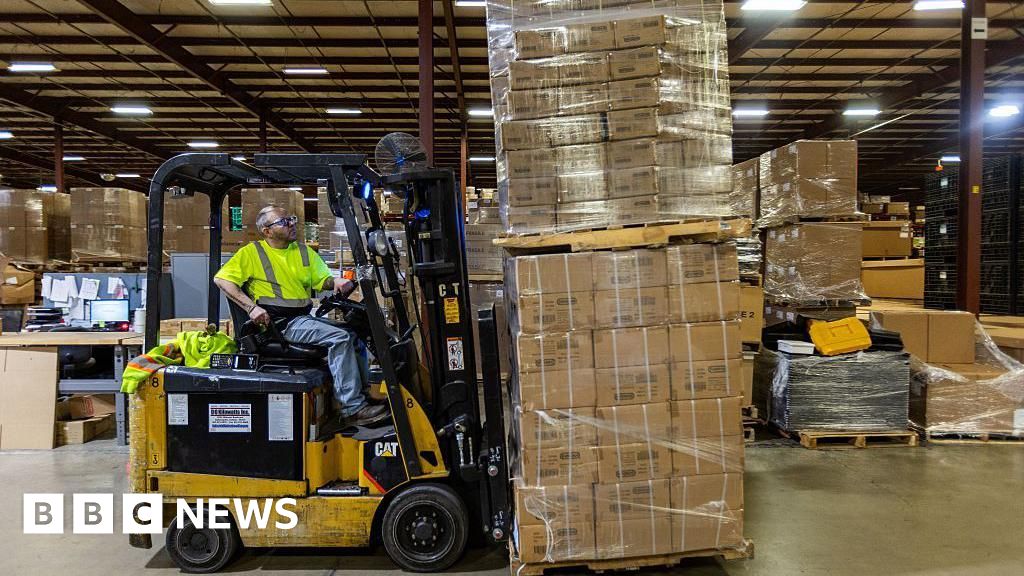The Resilience of the U.S. Job Market Amid Trade Uncertainty
The U.S. labor market has demonstrated remarkable resilience, standing strong in the face of uncertainties arising from changes to trade policy. Recent reports indicate that hiring remained robust in April, with the economy adding 177,000 jobs. Notably, the unemployment rate held steady at 4.2%, highlighting a steady demand for labor even as economic concerns circulate.
An Unexpected Employment Surge
This job growth exceeded many analysts’ expectations during a tumultuous month marked by volatility in financial markets. Despite rising worries regarding the overall economy—reflected in various business and household surveys—the job market has maintained its strength. The ability of employers to continue hiring amidst such conditions is an encouraging sign for consumer spending, especially as households grapple with rising prices and increased interest rates.
Hope Amid Uncertainty
The latest job figures have raised hopes that the U.S. may navigate through the stormy waters of tariff policies without plunging into a significant economic downturn. However, experts caution against premature optimism. The effects of sweeping import taxes, implemented recently under the Trump administration, are expected to take time to manifest fully. Analysts suggest that while the current job numbers are a positive indication, the overall outlook remains fraught with uncertainty.
Mixed Signals in Economic Data
Olu Sonola, head of U.S. economic research at Fitch Ratings, interpreted the job report as a positive sign, despite lower-than-expected job additions in January and February after revisions. “The key message from the totality of the data is that the U.S. economy was fundamentally strong through early April, even though the future remains uncertain," he stated. This encapsulates the mixed feelings prevalent among economists about the economic landscape.
The Impact of Tariffs on Business Strategy
The Labor Department’s surveys were conducted shortly after President Trump’s announcement of "Liberation Day" tariffs, which raised the average import tax rate in the U.S. to the highest level seen in more than a century. Many businesses are currently adopting a cautious approach to hiring, reflecting the rapid policy changes and the hope that new trade deals promised by the administration will manifest positively.
Sector-Specific Trends in Hiring
In terms of sector performance, hiring was particularly strong in healthcare, warehousing, and transportation industries. Conversely, there was a notable decline in employment within the federal government, an area where Trump has pledged to cut spending. However, these losses were mitigated by gains seen in local government jobs. The manufacturing and retail sectors, which played a significant role in prior growth, experienced payroll drops during this period.
Wages and Monetary Policy Considerations
The report also highlighted a 3.8% rise in average hourly pay over the past year, a factor that could influence monetary policy. Seema Shah, chief global strategist at Principal Asset Management, pointed out that the current job growth diminishes the urgency for the Federal Reserve to cut interest rates. “With the unemployment rate near record lows, consumer activity still strong, and inflation surpassing targets, why would the Fed consider rate cuts now?” she asked.
Balancing Act Toward Economic Stability
Looking ahead, while there is a suggestion that the economy may weaken in the coming months, the existing underlying momentum gives the U.S. a reasonable chance of avoiding a recession. Experts assert that a timely retreat from aggressive tariff implementations could be vital in maintaining this trajectory. The complexities of navigating these economic waters underscore the challenges businesses and policymakers will continue to face as they adapt to an evolving economic environment.
In summary, while the job market in the U.S. has demonstrated resilience and adaptability, it remains influenced by a myriad of factors, painting a complex picture of the economy’s future.


